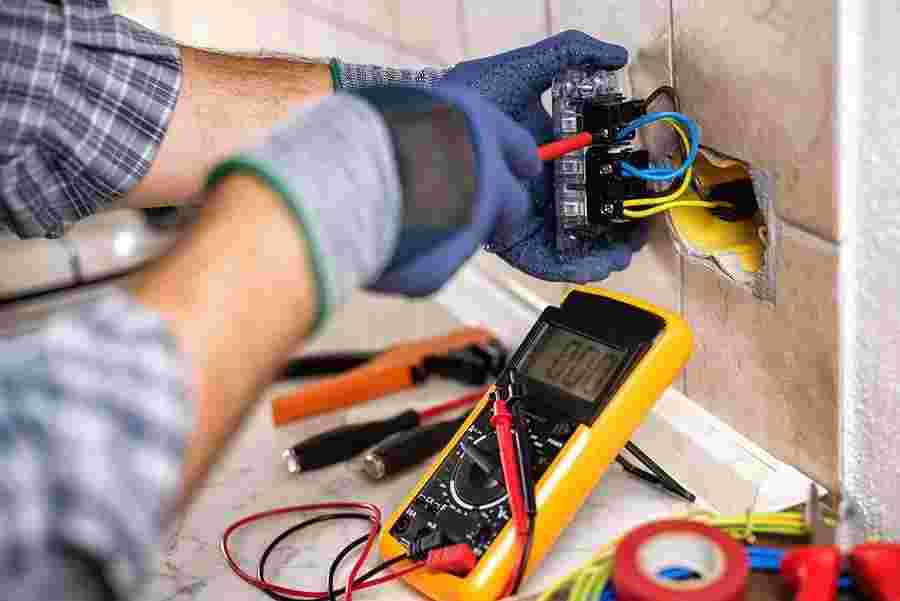How to Ensure Safety with Commercial Electrical Contractors

Ensuring safety is paramount when working with commercial electrical contractors. Whether undertaking new installations, renovations, or maintenance projects, prioritizing safety measures is essential to protect personnel, property, and business operations. Here are crucial steps to ensure safety when collaborating with commercial electrical contractors:
Verify Licensing and Certification
Regulatory Compliance
-
Confirm that the electrical contractors hold valid licenses and certifications required by local authorities.
-
Ensure their credentials are up-to-date and in compliance with industry regulations and standards.
Specialized Training
-
Verify that the contractors possess specialized training and certifications relevant to commercial electrical work.
-
Look for credentials indicating proficiency in areas such as electrical safety, OSHA regulations, and first aid.
Review Safety Policies and Procedures
Safety Protocols
-
Request copies of the contractor's safety policies, procedures, and protocols.
-
Ensure they have comprehensive safety programs in place to mitigate risks and prevent accidents.
Compliance with Standards
-
Verify that the contractors adhere to relevant safety standards, such as NFPA 70E for electrical safety in the workplace.
-
Confirm their commitment to maintaining safe working conditions and practices
Conduct Safety Training and Orientation
Orientation Sessions
-
Schedule safety training and orientation sessions for the contractors and their workforce.
-
Review project-specific safety requirements, hazard identification, and emergency procedures.
Provide Resources
-
Supply necessary safety equipment, signage, and personal protective gear for the contractors.
-
Ensure access to safety resources, such as fire extinguishers, first aid kits, and emergency contact information.
Establish Clear Communication Channels
Project Coordination
-
Establish clear communication channels for sharing safety-related information and updates.
-
Designate a point of contact for safety-related inquiries and emergencies.
Regular Meetings
-
Conduct regular safety meetings and toolbox talks to address potential hazards and reinforce safety protocols.
-
Encourage open dialogue between your team and the contractors to address safety concerns promptly.
Monitor Worksite Safety
Site Inspections
-
Perform regular inspections of the worksite to identify safety hazards and compliance with safety protocols.
-
Address any safety deficiencies or violations promptly to maintain a safe working environment.
Safety Audits
-
Conduct periodic safety audits to assess the effectiveness of safety measures and identify areas for improvement.
-
Implement corrective actions and follow-up measures to enhance safety performance.
Enforce Safety Compliance
Accountability
-
Hold contractors accountable for safety compliance and adherence to established protocols.
-
Clearly communicate safety expectations and consequences for non-compliance.
Continuous Improvement
-
Promote a culture of continuous improvement by soliciting feedback and suggestions for enhancing safety practices.
-
Encourage contractors to participate in safety initiatives and share best practices with their workforce.
Document Safety Records and Incidents
Recordkeeping
-
Maintain detailed records of safety training sessions, inspections, incidents, and corrective actions.
-
Keep documentation accessible for review and audit purposes.
Incident Reporting
-
Establish procedures for reporting and investigating safety incidents, near misses, and accidents.
-
Implement corrective actions to prevent recurrence and improve safety performance.
Provide Feedback and Recognition
Feedback Mechanisms
-
Provide constructive feedback to contractors regarding safety performance and compliance.
-
Acknowledge and commend contractors and their workforce for exemplary safety practices and contributions.
Recognition Programs
-
Implement recognition programs to reward contractors for achieving safety milestones and excellence in safety performance.
-
Encourage a collaborative approach to safety and recognize the collective efforts of all stakeholders.
Conclusion
Collaborating with commercial electrical contractors requires a proactive approach to safety management and oversight. By verifying credentials, establishing clear communication channels, conducting safety training, monitoring worksite safety, enforcing compliance, documenting safety records, and providing feedback and recognition, businesses can ensure a safe working environment for all personnel involved. Prioritizing safety not only protects individuals and assets but also fosters a culture of safety excellence that contributes to the success and sustainability of commercial projects.
- Whats New
- Shopping
- Wellness
- Sports
- Theater
- Religion
- Party
- Networking
- Music
- Literature
- Art
- Health
- Spiele
- Food
- Drinks
- Fitness
- Gardening
- Dance
- Causes
- Film
- Crafts
- Other/General
- Cricket
- Grooming
- Technology

